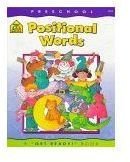Creative Lesson Plan for Teaching Preschoolers Positional Words
Positional words are words, phrases, and clauses that describe the location of something, often in relation to something else. Within the English language, the most common positional words are prepositions and adverbs, although some nouns and other structures that function as adverbials can be position words as well.
Although preschoolers are not ready for intensive grammatical study, even the youngest children can learn about the most common positional words in English. This lesson plan outlines books and activities to introduce preschoolers to this category of words.
Discussion and Prior Knowledge
The preschool teacher can introduce the students to positional words by asking the following questions at the beginning of the lesson:
- What is a word?
- What is a positional word?
- What do the words under, over, and on have in common?
Most preschoolers will not be able to answer the second question. However, they should be able to answer the first and third questions such as by giving examples of words or by giving examples of sentences that contain the words under, over, and on. Preschool children might also be able to articulate that such words tell you where something is.
If the students cannot satisfactorily answer the first or third questions, the teacher should review the concept of a word and point out the similarities between the words under, over, and on before reading the two books in the next section.
Reading
After the introduction, the teacher can read one or more of the following books aloud to the class during circle time:
- Up, Down, and Around Big Book (Big Books) by Katherine Ayres and Nadine Bernard Westcott (2008)
- Under, Over, by the Clover: What Is a Preposition? (Words Are Categorical) by Brian P. Cleary and Brian Gable (2003)
- Ups and Downs: A Book of Positional Words by Robin Boyer (2000)
- Positional Words (Get Ready Book) by Barbara Gregorich, Joan Hoffman, and Richard Pape (1995)
- All about Where by Tana Hoban (1991)
After reading each book, discuss the contents with the entire class. Ask age appropriate questions such as “What did you learn about positional words?”
Toy Box Activity
The toy box activity will help preschool students visualize the locations represented by positional words. The materials needed for this preschool activity are:
- Small to medium sized boxes
- Small toys
To play the toy box activity, first give each child a box and a toy. The teacher will then give directions to the students by inserting positional words into the following sentence: The toy is _____ the box. The preschoolers should then place the toy in the correct location.
For example, if the teacher says, “The toy is in the box,” then the children should place their toys in their boxes. This activity will help preschoolers connect positional words to locations. Continue to introduce more positional words as appropriate for the skill levels of the students.
In addition to having the students follow directions that contain positional words, the teacher can also use the toy box activity to teach children to connect locations to positional words. During circle time, the teacher can place the toy in different locations relative to the box. The preschoolers should then supply the positional word for the action.
For example, if the teacher places the toy to the side of the box, the preschooler should be able to answer, “The toy is next to the box.”
Assessment
At the end of the lesson, review what the preschoolers learned by asking the following questions:
- What is a positional word?
- Name some positional words.
- What do the words under, over, and on have in common?
Students should be able to provide answers for all three questions after being read at least one book about positional words and playing the toy box activity.
Teaching positional words in the preschool classroom is an easy language lesson that prepares young children for later vocabulary and grammatical study.
Sources
- All ideas courtesy of the author, Heather Marie Kosur
